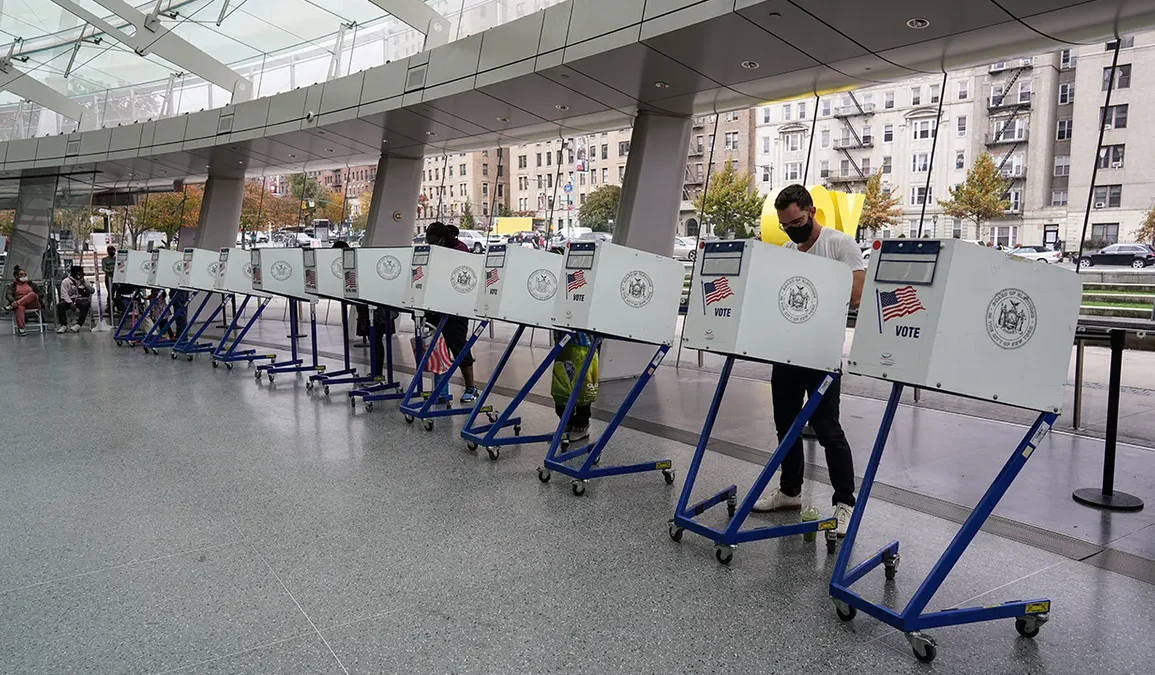The Changing Landscape of Swing States: A Closer Look
In the world of politics, swing states hold a significant amount of power and influence. These states, which can shift between red and blue, often play a decisive role in determining the outcome of presidential elections. Over the years, however, the demographics and preferences of these swing states have been evolving, making it increasingly difficult to predict their political leanings.
Recently, Bret Baier, the chief political anchor for and the host of Special Report with Bret Baier, took a closer look at the changing landscape of swing states and the potential impact it could have on future elections. According to Baier, an early look at the 2024 Presidential Power Rankings predicts Georgia and Arizona to be among the closest contests. This is quite surprising, considering that these states were once thought to be solid Republican strongholds.
Nevada, Wisconsin, and Pennsylvania are also states that have shown a tendency to shift between red and blue over the years. This unpredictability makes it difficult to determine which nominee voters in these states will choose in the upcoming 2024 election. Jessica Taylor, the Senate and governors editor for the Cook Political Report, noted that these states were the closest in the previous election cycle.
To understand the changing dynamics of these swing states, it is important to examine the historical context. Back in 2000, Florida was a hotly contested battleground state. Both candidates, George W. Bush and Al Gore, employed different campaign tactics to appeal to specific voter groups. Bush, with his Texas roots, targeted rural Florida voters, while Gore used a Gore-Lieberman yarmulke to cater to the state’s large Jewish population.
Ultimately, Bush won Florida by a narrow margin, leading to a recount and a month-long legal battle. Since then, Florida’s population has undergone significant changes, with growing Cuban and Venezuelan populations that tend to lean Republican due to their experiences with socialism. This demographic shift has undoubtedly influenced the state’s political landscape.
Similarly, Colorado has experienced its own demographic changes over the years. Once a state that leaned towards Republicans, it has now firmly placed itself in the solid-blue category. This shift can be attributed, in part, to the “hope and change” sentiment that resonated with young voters during the Obama years. Denver, in particular, has seen a 20% population growth, primarily driven by minorities moving to the city.
The impact of suburban voters cannot be overlooked either. In states like Colorado and Georgia, suburban voters have tended to lean Democrat, especially since Donald Trump became the standard-bearer of the Republican Party. Educated women voters, in particular, have moved away from the GOP, causing a shift in political preferences in these areas.
Arizona, another swing state, has witnessed a growing Hispanic population, with the majority leaning Democrat. Campaigns have made significant efforts to appeal to different groups within the state, employing Spanish-language ads, buttons, and posters to connect with voters on a more personal level.
Nevada, on the other hand, has trended towards the Democrats since 2008, largely due to an increase in Hispanic voters. Minorities have also played a crucial role in helping Democrats in Georgia, a state that was reliably Republican until the 2020 election. Atlanta’s thriving job market has attracted younger and more diverse voters, significantly impacting the state’s political landscape.
While these swing states have experienced significant changes, it is essential to remember that political preferences are also shifting across the country. The coalitions that make up the two major parties are evolving, with political scientists debating the makeup of the Republican and Democratic Parties. This ongoing transformation is shaping the political landscape before our eyes.
As we look ahead to future elections, it is clear that the battleground states could change once again. Minnesota, for instance, is trending in a similar direction as Wisconsin and Pennsylvania, with farmers and agricultural workers expressing dissatisfaction with Democratic messaging on environmental issues and gun policy. Conversely, Texas, traditionally a Republican stronghold, is facing a narrower margin of victory for the GOP in recent elections, due in part to the influx of liberal voters from states like California.
North Carolina, another state to watch, has the potential to become a swing state once more. While it has trended red in recent years, the influx of wealthy urban voters during the pandemic, coupled with declining populations in deep-red rural counties, could lead to a shift in political preferences.
In conclusion, the changing demographics and preferences of swing states have significant implications for future elections. As the political landscape continues to evolve, it is crucial for candidates to adapt their campaign strategies to appeal to a diverse range of voters. The outcomes of these swing states will undoubtedly shape the political landscape for years to come.




